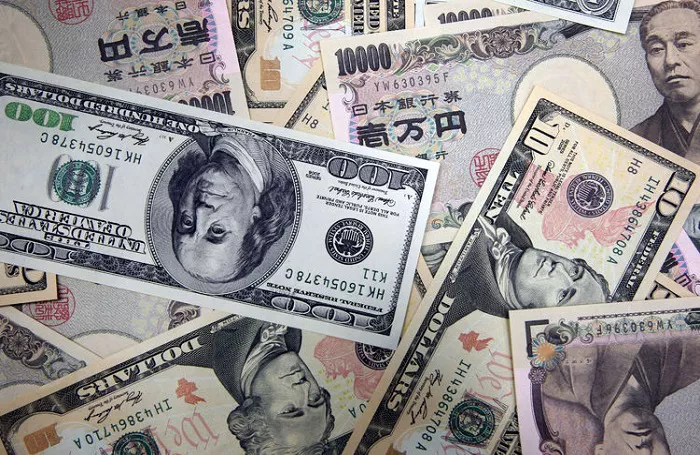In the expansive and ever – evolving landscape of international finance, the exchange between the US dollar (USD) and the Japanese yen (JPY) isn’t merely a routine transaction—it’s a linchpin that holds the intricate web of global currency interactions together. The US dollar, as the world’s dominant reserve currency, underpins international trade, with its influence extending to commodities pricing, central bank reserves, and global debt markets. On the other hand, the Japanese yen, renowned for its status as a safe – haven currency, often attracts investors during times of economic uncertainty, thanks to Japan’s robust financial system and its long – standing policy of maintaining a stable monetary environment.This article sets out on a journey to peel back the layers of the complex process of exchanging these two pivotal currencies.
The Concept of Exchange Rates
At its core, the exchange rate is the price at which one currency can be exchanged for another. In the case of the USD/JPY pair, it represents the amount of yen required to purchase one US dollar. For instance, if the exchange rate is 140, it means that 140 yen are needed to buy 1 US dollar. Exchange rates are dynamic, fluctuating constantly in response to a multitude of economic, political, and market forces.
Factors Influencing the USD/JPY Exchange Rate
Interest Rates: Central banks, such as the Federal Reserve in the US and the Bank of Japan, play a pivotal role in determining interest rates. Higher interest rates in the US relative to Japan tend to attract foreign investors seeking better returns on their investments. This increased demand for US dollars strengthens its value, leading to an appreciation of the USD/JPY exchange rate. Conversely, if the Bank of Japan raises interest rates, the yen may become more attractive, causing the exchange rate to decline.
Economic Indicators: Macroeconomic data, including GDP growth, inflation rates, and employment figures, significantly impact currency values. A robust US economy with strong GDP growth and low unemployment may boost the dollar’s value, while a sluggish Japanese economy or high inflation could weaken the yen.
For example, if the US reports better – than – expected GDP growth, investors may flock to the dollar, driving up its exchange rate against the yen.
Geopolitical Events: Political stability, trade policies, and international relations can also sway the USD/JPY exchange rate. Tensions between the US and other countries, changes in trade agreements, or political unrest in Japan can create uncertainty in the financial markets. During times of geopolitical stress, investors often seek the relative safety of the US dollar, causing it to appreciate against the yen.
The Process of Exchanging USD and JPY
Banks and Financial Institutions
Commercial banks are the primary intermediaries for currency exchange. When an individual or a business wishes to exchange US dollars for Japanese yen, they can approach a local bank. The bank will quote an exchange rate, which typically includes a small spread to cover its costs and generate a profit. For example, if the market rate is 140, the bank may offer an exchange rate of 140.50 when selling yen in exchange for dollars.The customer then provides the dollars, and the bank credits the equivalent amount of yen to the customer’s account or provides physical yen notes, depending on the customer’s preference.
Foreign Exchange Markets
Beyond banks, the foreign exchange (forex) market is a global decentralized market where currencies are traded. Large financial institutions, multinational corporations, hedge funds, and individual traders participate in this market. Spot transactions, which involve the immediate exchange of currencies at the current market rate, are common. For example, a multinational company based in the US that needs to pay its Japanese suppliers in yen can enter the forex market to exchange dollars for yen at the prevailing spot rate. Additionally, forward contracts can be used to lock in an exchange rate for a future date, providing protection against currency fluctuations.
Exchange Rate Quotations
Exchange rates are quoted in two ways: direct and indirect. In the case of USD/JPY, a direct quote would state the amount of yen per one US dollar, such as 140 yen per dollar. An indirect quote, on the other hand, would show the amount of US dollars per one Japanese yen, which would be the reciprocal of the direct quote (in this case, approximately 0.00714 dollars per yen).Traders and financial institutions typically use direct quotes for simplicity and consistency in the forex market.
Conclusion
Politically, decisions made by the Federal Reserve in the US and the Bank of Japan can have a profound impact. Interest rate hikes by the Federal Reserve can draw in investors seeking higher returns, driving up the dollar’s value. Meanwhile, the Bank of Japan’s monetary policies, such as quantitative easing, can flood the market with yen, causing its value to decline. Additionally, geopolitical tensions, like trade disputes or international conflicts, can create market volatility, prompting investors to shift their funds between the dollar and the yen based on perceived safety and stability. For market participants, understanding these elements is not just beneficial—it’s essential. In international trade, businesses that import from Japan or export to the US need to accurately forecast exchange rate movements to manage costs and ensure profitability. A sudden appreciation of the yen against the dollar can significantly increase the cost of Japanese imports for US – based businesses. Similarly, investors, whether they are managing a diversified portfolio or engaging in currency speculation, rely on a deep understanding of the USD/JPY exchange mechanism. By analyzing economic data, central bank policies, and market trends, they can make strategic decisions to maximize returns and mitigate risks in the constantly fluctuating global financial landscape.
Related topics:
- Current AUD Exchange Rate: $20 Australian in US Dollars
- Current USD Exchange Rate: 45 US Dollars in Australian Dollars
- Current USD Exchange Rate: 500 US Dollars to Indian Rupees


